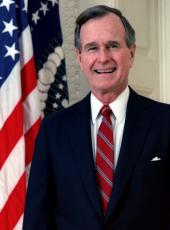Technical Assistance for Central and Eastern Europe
The President and Chancellor Kohl announced today that the United States and Germany will offer joint technical assistance programs to enhance nuclear energy safety in Central and Eastern Europe. This initiative was prompted by their shared commitment to the safe operation of peaceful nuclear facilities worldwide, as well as by requests from Central and Eastern European Governments for assistance in nuclear energy safety.
As technological leaders in the field, the United States and Germany will offer joint assistance to Central and Eastern Europe as well as working through the and with the International Atomic Energy Agency (IAEA) in Vienna. Cooperation will focus initially on safety matters related to older reactors operating in the region, with the primary objective of enhancing operational safety at these facilities. Both sides anticipate that this initially modest program will lay the foundation for further U.S.-German joint efforts with Central and Eastern Europe, as part of their broader commitment to the success of these new democracies.
The IAEA is now engaged in a comprehensive safety review of first generational nuclear reactors in Central and Eastern Europe. The United States and Germany will provide teams of experts and contribute up to $200,000 each in support of this work, which will focus on instrumentation and control, operating procedures, fire protection, and facility management and organization. The United States and Germany also support follow-on measures to the IAEA safety review in key areas such as operator training, power plant maintenance, and safety procedures, and have agreed to matching financial commitments of up to $1 million each over the next 2 years to help fund these activities.
In addition, the United States and Germany will work closely with the World Bank and the newly created European Bank for Reconstruction and Development to encourage a priority focus on safety and environmental concerns in their energy-related lending programs. This could include, for example, funding for alternative sources of electricity to cover energy demands while safety repairs are performed at nuclear power plants. Both sides will also work to promote energy efficiency and adequate supplies of energy resources in these countries, and they will work jointly through the Organization for Economic Cooperation and Development, the Nuclear Energy Agency, and the International Energy Agency to promote nuclear energy safety in Central and Eastern Europe.
Coordination of Bilateral Programs With the Soviet Union
The President and Chancellor Kohl also agreed to coordinate their existing programs of nuclear operational safety cooperation with the Soviet Union. The U.S. program, which commenced with a U.S.-Soviet agreement signed on March 16, 1990, is being implemented under a longstanding U.S.-Soviet Memorandum of Cooperation on Civilian Nuclear Reactor Safety. The program emphasizes improved operational safety practices through strengthened operating instructions, training, and management and operational controls.
George Bush, White House Fact Sheet on the United States-German Nuclear Energy Safety Initiative Online by Gerhard Peters and John T. Woolley, The American Presidency Project https://www.presidency.ucsb.edu/node/265363

